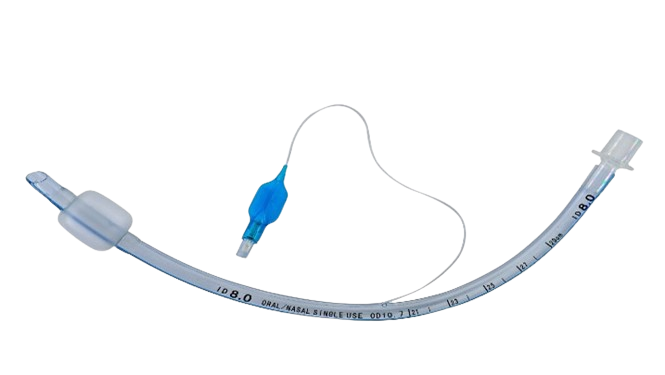Endo-Tracheal tube
(Cuffed and Un-cuffed)
The Tracheal Tube is used in general anesthesia, intensive care and emergency medicine for airway management and mechanical ventilation.
The Tracheal Tube is made from PVC in medical grade, which has different models defining by its structure. The Tracheal Tube (cuffed) consists of main tube, cuff, inflating tube, check-valve, pilot balloon, 15mm connector. The Tracheal Tube (uncuffed) consists of main tube, 15mm connector.
Tracheal tubes have a bevel end at the patient end with angle of bevel.
The main tube of ETT has a radiopaque marker to allow visualization of the tracheal tube when verification of the depth of intubation is required.
Type | ||
Cuffed | Uncuffed | |
Standard Tracheal Tube | 3.0, 3.5, 4.0, 4.5, 5.0, 5.5, 6.0, 6.5, 7.0, 7.5, 8.0, 8.5, 9.0, 9.5,10.0, 10.5, 11.0 | 2.5, 3.0, 3.5, 4.0, 4.5, 5.0, 5.5, 6.0, 6.5, 7.0, 7.5, 8.0, 8.5, 9.0, 9.5,10.0. |


